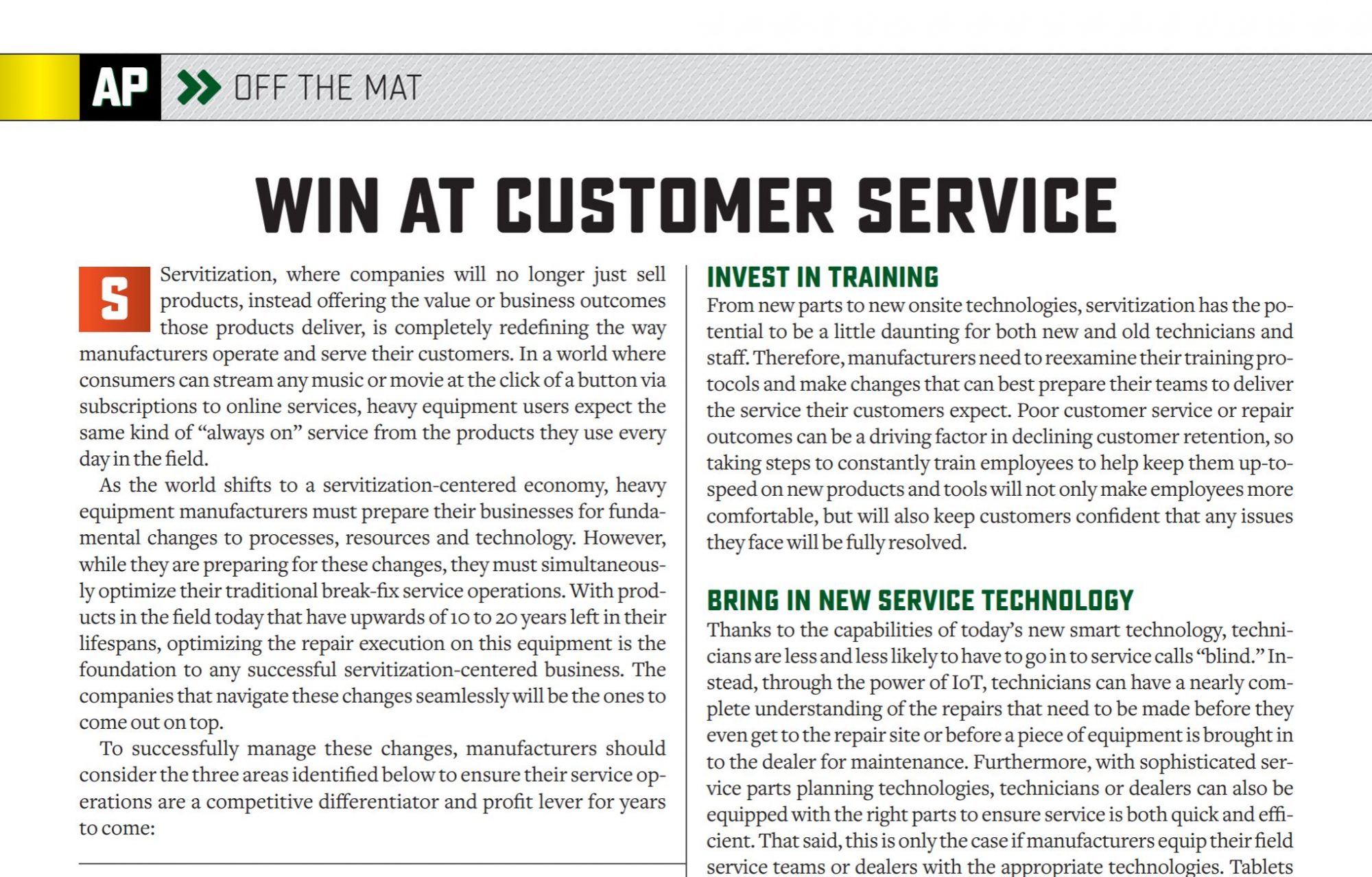How to Win at Customer Service in the Servitization Era
BY Gary Brooks

Servitization, where companies will no longer just sell products, instead offering the value or business outcomes those products deliver, is completely redefining the way manufacturers operate and serve their customers. In a world where consumers can stream any music or movie at the click of a button via subscriptions to online services, heavy equipment users expect the same kind of “always on” service from the products they use every day in the field.
As the world shifts to a servitization-centered economy, heavy equipment manufacturers must prepare their businesses for fundamental changes to processes, resources and technology. However, while they are preparing for these changes, they must simultaneously optimize their traditional break-fix service operations. With products in the field today that have upwards of 10 to 20 years left in their lifespans, optimizing the repair execution on this equipment is the foundation to any successful servitization-centered business. The companies that navigate these changes seamlessly will be the ones to come out on top.
To successfully manage these changes, manufacturers should consider the three areas identified below to ensure their service operations are a competitive differentiator and profit lever for years to come:
Invest in Training
From new parts to new onsite technologies, servitization has the potential to be a little daunting for both new and old technicians and staff. Therefore, manufacturers need to reexamine their training protocols and make changes that can best prepare their teams to deliver the service their customers expect. Poor customer service or repair outcomes can be a driving factor in declining customer retention, so taking steps to constantly train employees to help keep them up-to-speed on new products and tools will not only make employees more comfortable, but will also keep customers confident that any issues they face will be fully resolved.
Bring in New Service Technology
Thanks to the capabilities of today’s new smart technology, technicians are less and less likely to have to go in to service calls “blind.” Instead, through the power of IoT, technicians can have a nearly complete understanding of the repairs that need to be made before they even get to the repair site or before a piece of equipment is brought in to the dealer for maintenance. Furthermore, with sophisticated service parts planning technologies, technicians or dealers can also be equipped with the right parts to ensure service is both quick and efficient. That said, this is only the case if manufacturers equip their field service teams or dealers with the appropriate technologies. Tablets and wearable technology, along with modern service parts inventory management solutions, provide the insights service teams need to meet today’s demanding customer expectations.
Improve Data and Insights Capabilities
Large, global operations combined with constantly changing market conditions makes manufacturing one of the most complex industries today. This means that oversight can be challenging and sometimes incredibly opaque. However, by increasing a company’s data infrastructure, service teams can have better insights into what is going on in each region, where delays may occur in shipping inventory, and more. Robust data insights and analytics will help customer service and distribution teams have a more transparent view into any hurdles they might face, so they can take appropriate action quickly and provide accurate answers when needed. This will help give customers a greater peace of mind and allow them to remain confident that their favorite manufacturing brands are still the best partner for them.
Technology alone will not prepare manufacturers for the shift to servitization, but it is a key enabler in ensuring a successful future. Manufacturers also must ensure they are preparing their employees, infrastructures and processes to ensure today’s ever-evolving customer expectations are not only met, but exceeded.

Gary Brooks
Gary Brooks is the CMO at Syncron.
